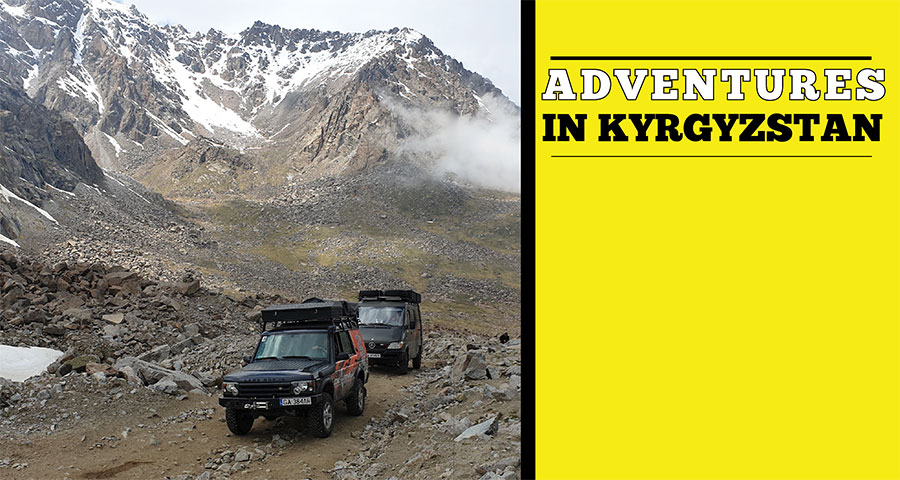
Kyrgyzstan is one of the most beautiful and picturesque countries in Central Asia. 94% of its area is mountains, which is why it is often called the Switzerland of Asia. Surrounded by high snow-capped peaks, the mountain valleys are full of flowers.
Strong Russian influence is still visible here, but the local tradition is still very much cultivated. While traveling around Kyrgyzstan, you can still meet hunters, hunting with eagles, spend the night in a yurt, try koumiss or learn the technique of weaving felt carpets.
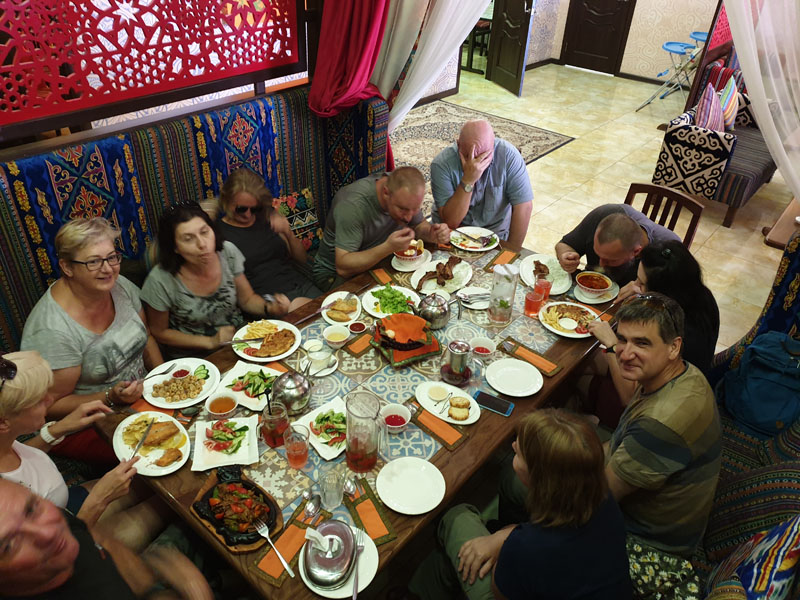
The first real Kyrgyz meal in Bishkeku – for breakfast go to Chaikhana NAVAT on Fuchika Street
In my opinion, Kyrgyzstan is an ideal country for off-road fun – mainly because it is cheap, and secondly, it is the safest and most predictable country out of all the Central Asian States.
Kyrgyzstan is the most democratic country in Central Asia, although this democracy often ends with a revolution in Bishkek followed by a change of power. Nevertheless, Kyrgyz presidents do not stay in office for decades, as is the case in Uzbekistan or Kazakhstan. A trip to Kyrgyzstan is mainly communing with nature. The best way to get to know this beautiful country is to meet the locals.
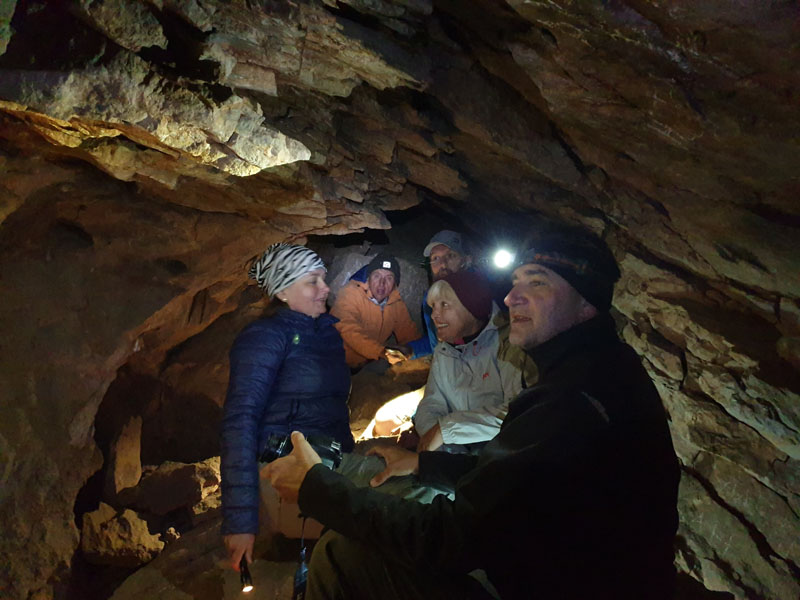
n Tash Rabat, your guide will take you to search for rock paintings
You can drive a 4×4 anywhere in Kyrgyzstan and as long as you do not destroy the terrain, no one will pay any attention to you. Most of the mountain roads are gravel roads, often buried by stones and are in themselves challenging for drivers. Similarly to the rivers in the valleys, these roads, in addition to being buried by avalanches, are also flooded during thaws.
Many of the bridges can be broken up by these processes and then fords should be looked for, and in many cases- there are no bridges (and never were) – only a ford crossing is possible, unless the water level is too high, in which case it is not worth the risk of attempting a crossing. The most common Kyrgyz off-road car is … a horse, or possibly a UAZ 452 (bukhanka), but all kinds of Toyotas are also common.
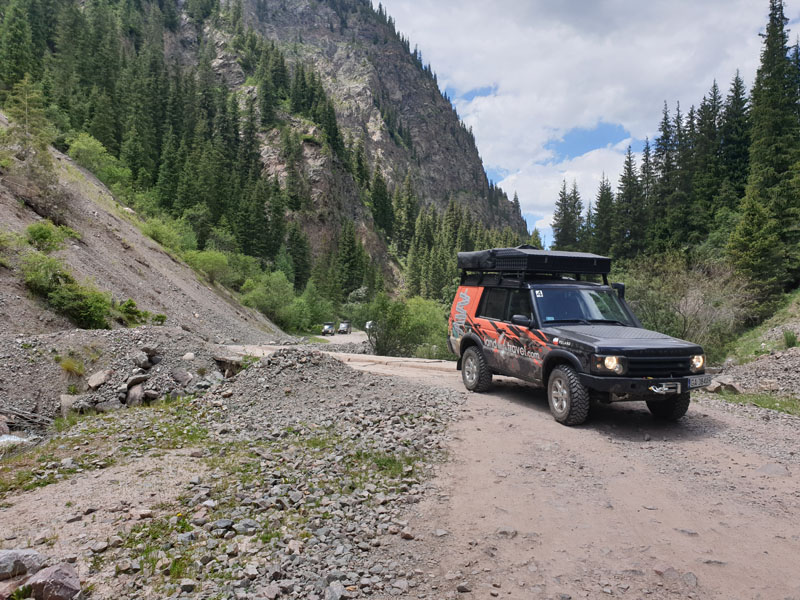
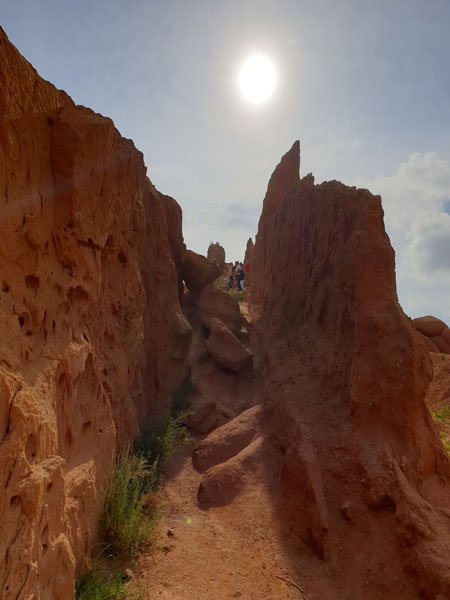
Fuel is not expensive in Kyrgyzstan at about 50c a litre, and you should refuel mainly at Gazprom stations (blue logo) or Bishkek Petroleum (green BP logo).
The official languages are Kyrgyz and Russian, and in general, most people don’t speak any other languages.
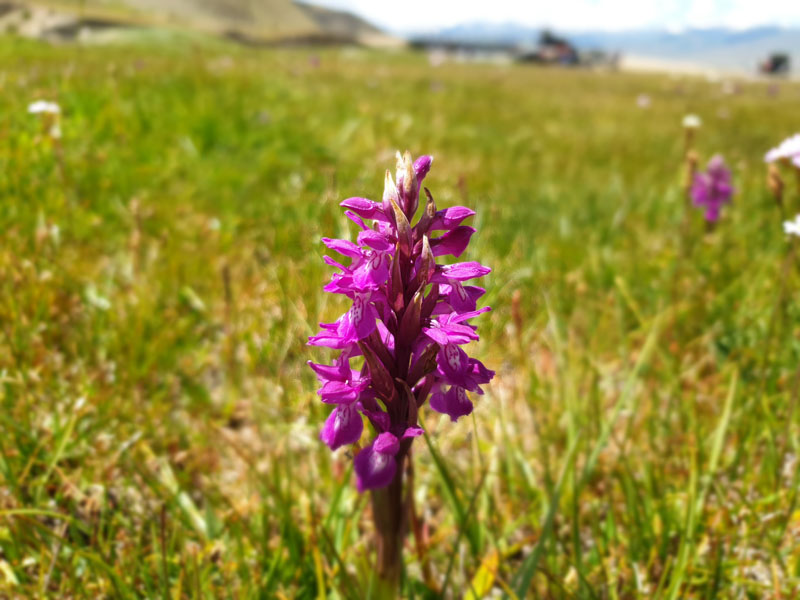
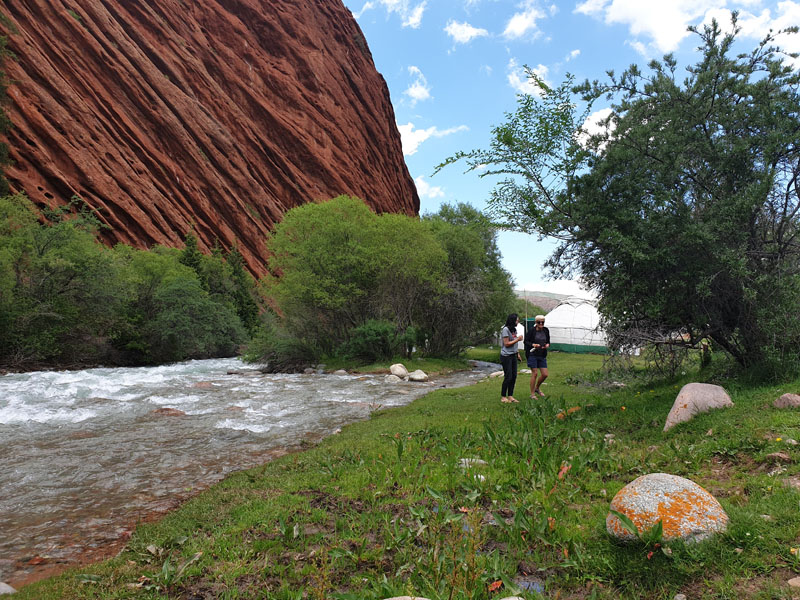
Police,laws, fines and bribes- unfortunately, every inhabitant of Kyrgyzstan knows that if stopped by a traffic policeman a bribe must be paid and that’s it. The amount of the bribe depends on the type and size of the ‘ offense’, but if you pay more than 500 – 1000 som, the police have made a lot of money from you.
Foreigners are rarely detained without a reason – I happened to be detained once for breaking a red light. Most often, the police wait up on the road from Bishkek to IssykKul, Bishkek to Osh and Bishkek to Naryn. Other drivers will warn you that they are “standing” by blinking their lights in warning. Private speed cameras, whose owners share the spoils of any fines with the Police, have been popular in the country for some time.
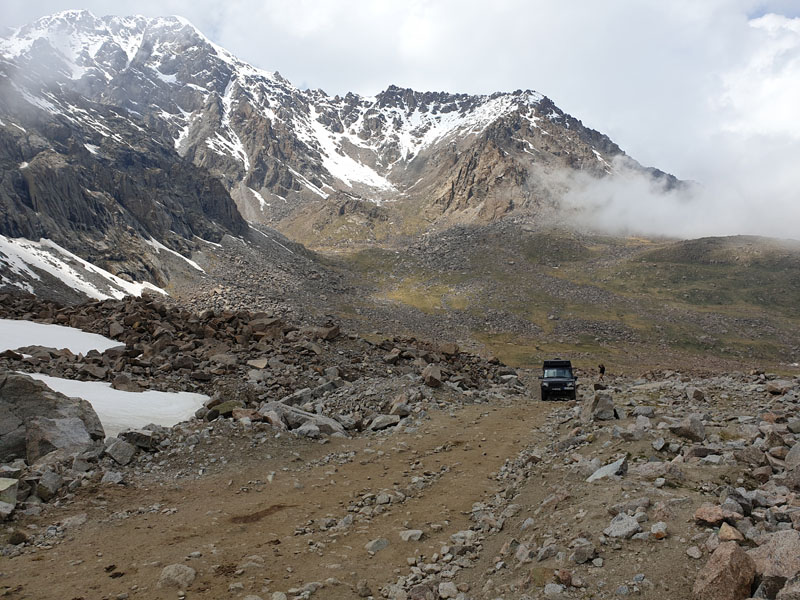
Tosor Pass, the altitude of 3,960m above sea level did not cause any difficulties for the Land Rovers.
The driving style, in general, is typically horn, horn and horn, whoever has the loudest horn takes priority. It is also worth being resolute behind the wheel, the Kyrgyz people immediately take advantage of any indecision. Traffic outside the cities is not so heavy, and you will notice that most cars on the road are generally not in good condition.
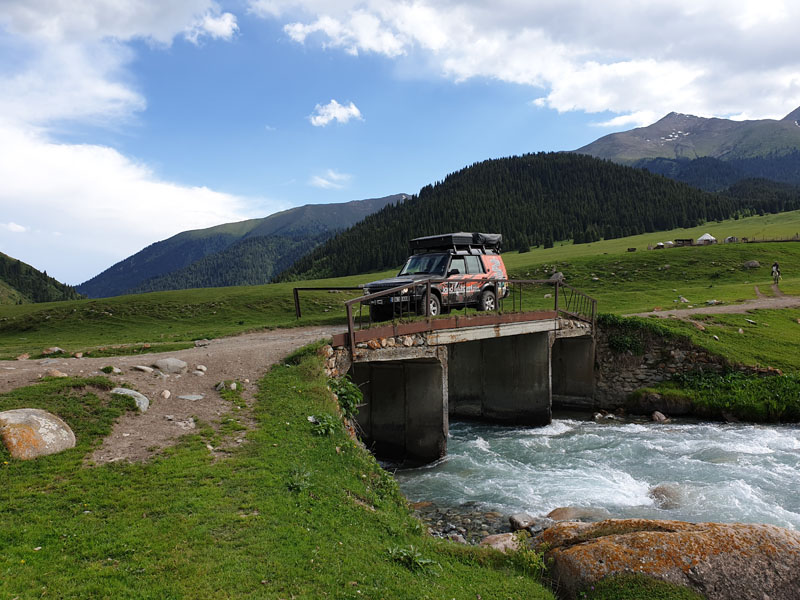
To cross or not to cross? This bridge is still in pretty good condition.
The condition of Kyrgyzstan roads is, let us say, not a reason for Kyrgyz people’s pride While the condition of the main roads M41, M39 or A365 between Issyk-Kul and Bishkek is OK (mainly asphalt), the remaining roads are… poor or very poor. If there used to be asphalt there at one point, now there are potholes or ruts.
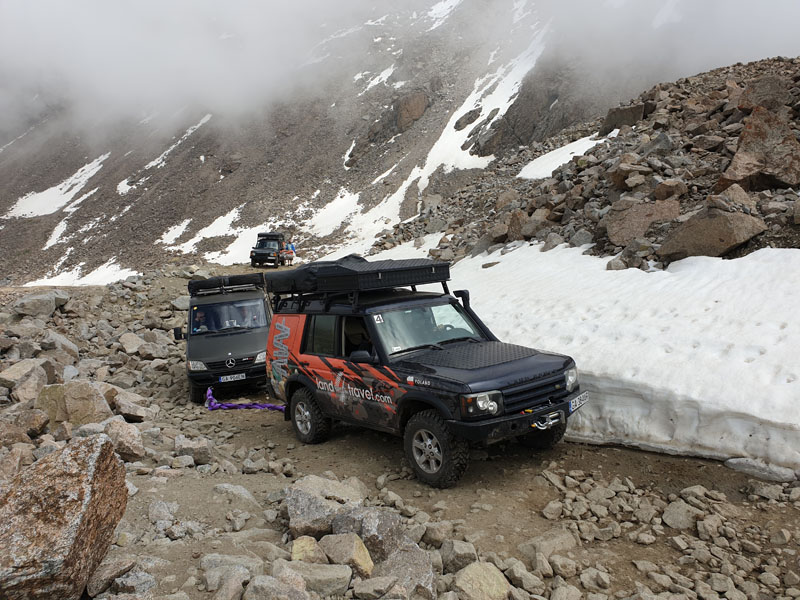
Our service truck, despite having 4WD drive, was not able to drive everywhere on its own.
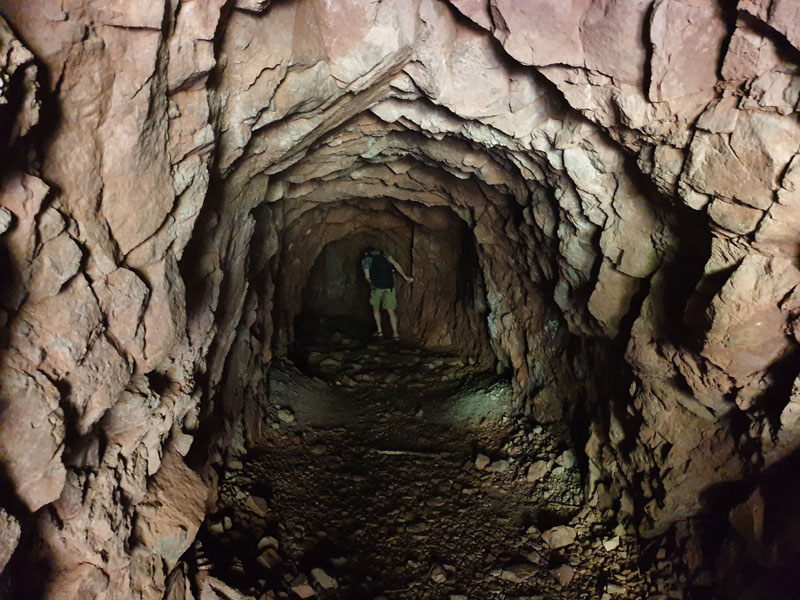
Kyrgyzstan is not only about horses and mountains, it also has a fascinating history
Mountain roads are of better or worse quality gravel. The main gravel roads can be like graters that will effectively vibrate your cars down to the last screw. Roads high in the mountains are often washed by streams that cut them to pieces and often there are also deep ruts, when the rainwater flows in rapid streams along the road.
You can camp in the wild wherever you find a suitable spot. At worst, at night, you will be woken up by sheep or horses or Kyrgyz, or all at once together. You can also choose to sleep in yurts that are set up near the main tourist spots. It is good to try to reserve a place in these yurts in advance, because it can be busy. A night camping in a yurt costs around 800 som.
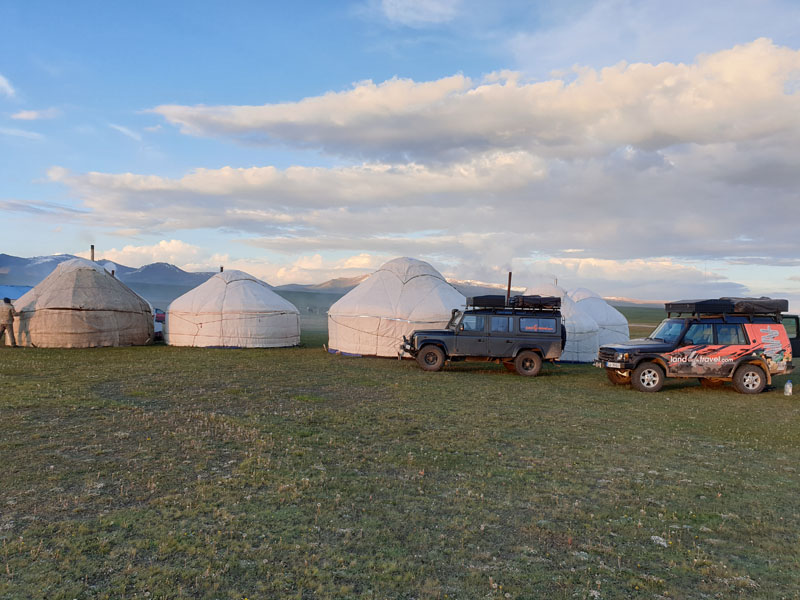
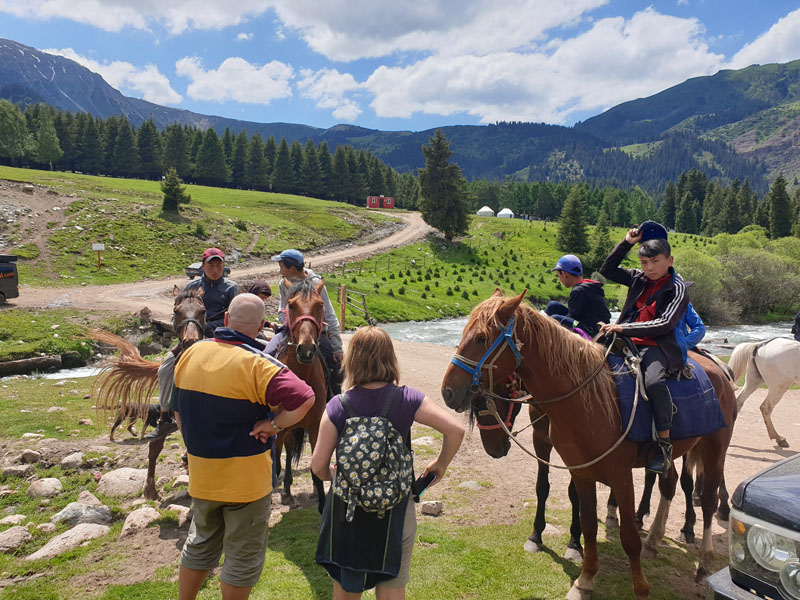
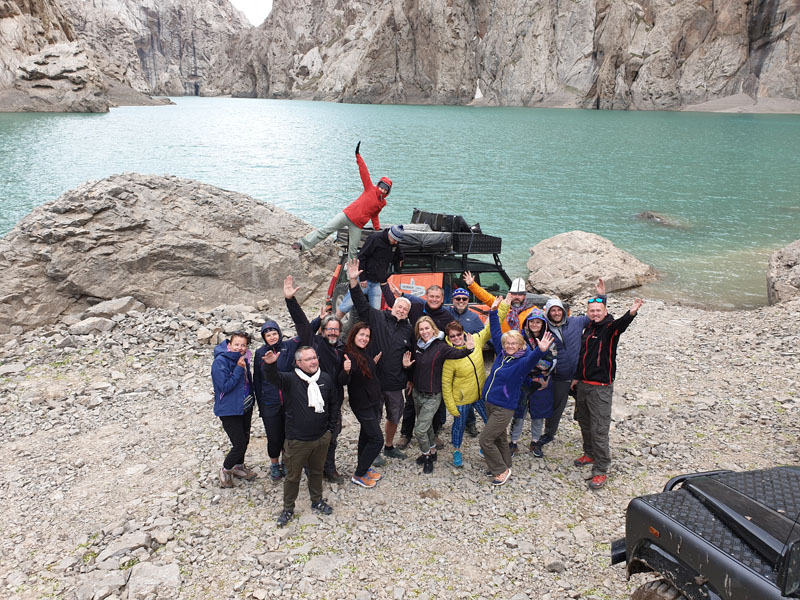
Kol-Suu – this time full of water, getting there is a very emotional experience
This is not a country for vegetarians. The tables are dominated by lagman and samsy, beshbarmak, kurdak and pielmieni … For a European, the most spectacular will be beshbarmak, or “five fingers” – it is a mix of pasta and mutton or horse meat, drenched in fat and meat broth. Everything eaten with one hand, without the use of cutlery.
Lagman is a soup with a piece of fried meat, a large amount of vegetables, potatoes, carrots, peppers and tomatoes.
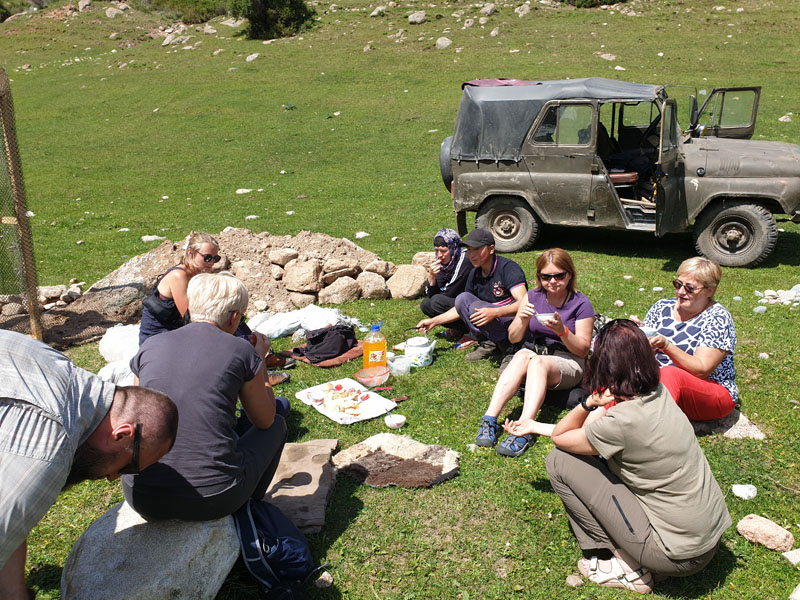
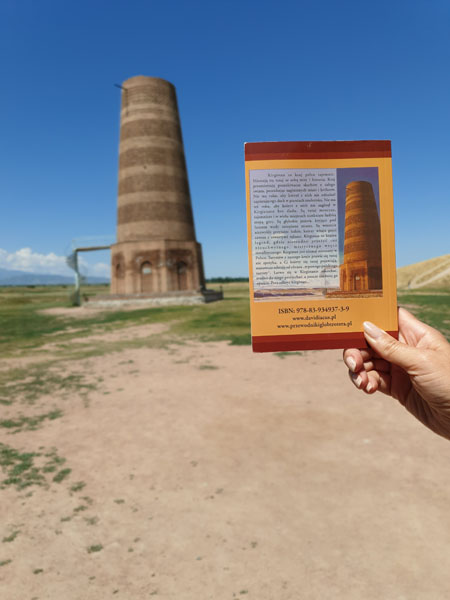
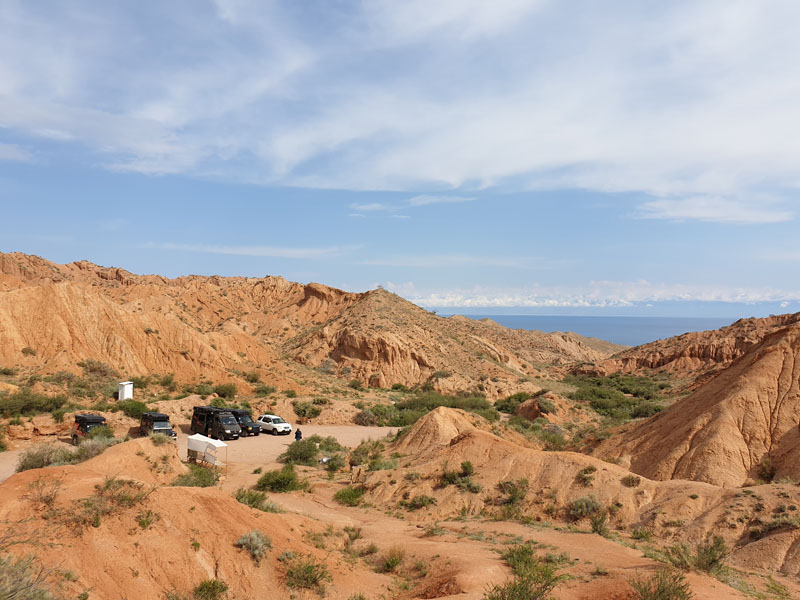
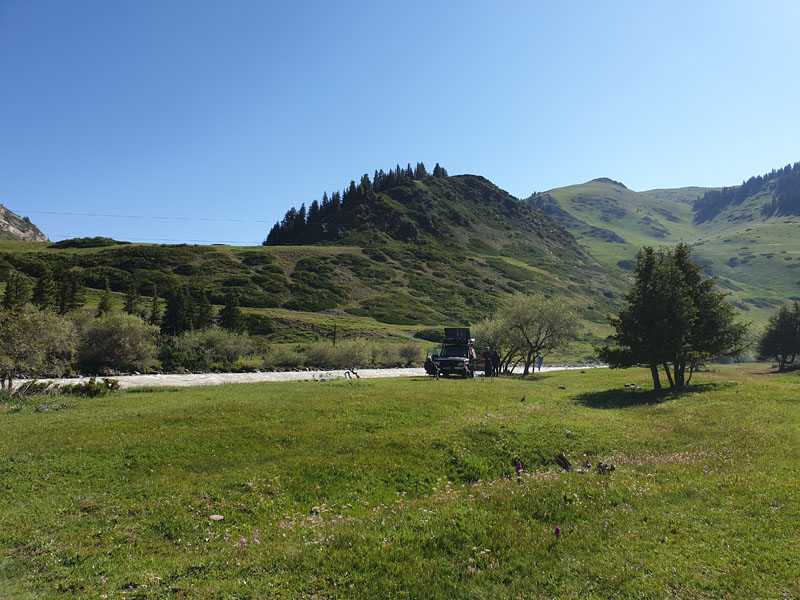
This is the dish that Kyrgyz people eat most often and of course, comes with a lot of fat. Samsa is a baked bun with chicken meat and fried onions. The price of one bun is around 50 som.Kurdak – in my opinion, the best Kyrgyz dish – fried beef, horse or mutton, highly seasoned and served with lots of fried and fresh onions, potatoes and paprika.
At every bazaar and every roadside car park, you can also try lamb shashlik, not one of my favourites. And to drink? Buy a Kyrgyz watermelon, definitely the best thing for hot weather.
At the end of July and beginning of August, they are the cheapest because they are grown in Kyrgyzstan. If you ask for a small watermelon, expect something around 6 kg and trust me, it will definitely be tasty and sweet.
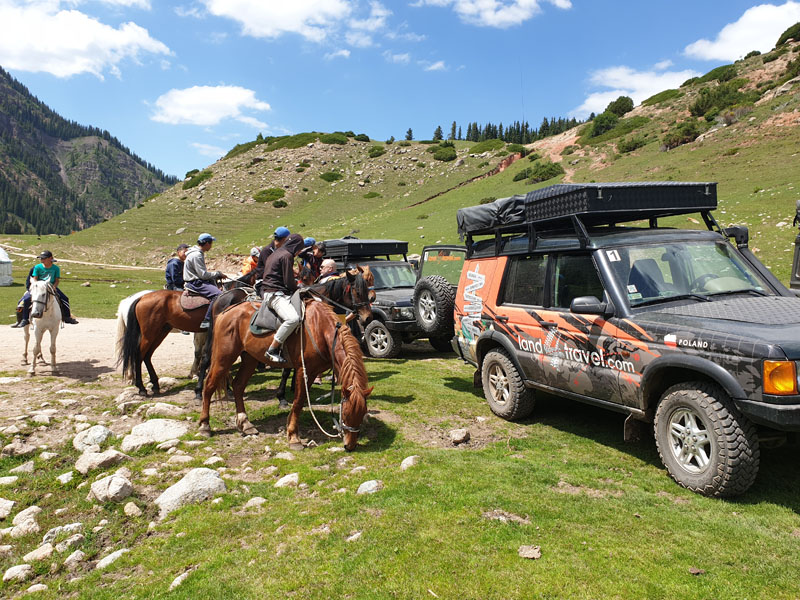
The Kyrgyz people never get off the horse … never
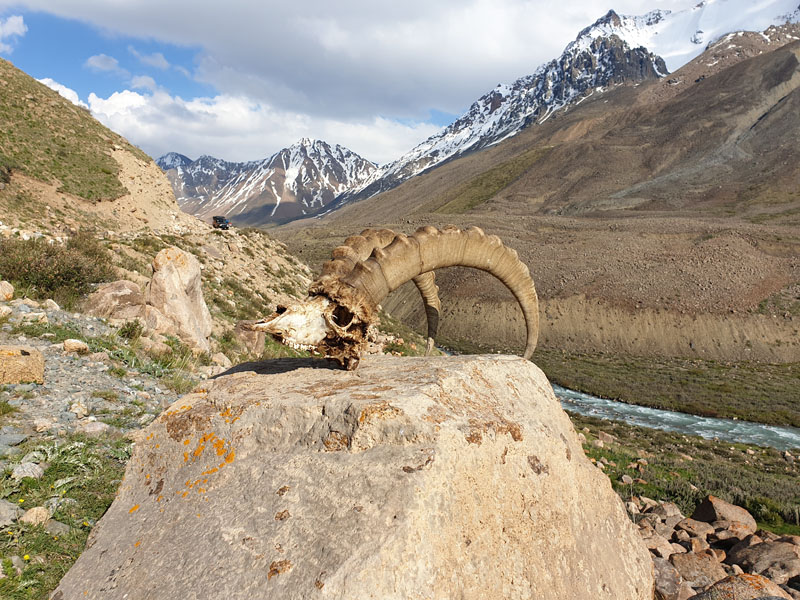
Let me share a recent trip to this wonderful country with you. We reach Bishkek – the capital of Kyrgyzstan – after more than 10 hours of flight (with Turkish Airline).
For the first night we choose the northern side of the salt lake IssykKul, with an area of over 6,280 km². On the way there, we drive through the area where the 3rd World Nomadic Games took place 3 years ago. A biannual event during which we had the opportunity to see over 3,000 competitors from 80 countries who competed with each other in over 70 sports disciplines. We saw hunting with dogs, hunting with eagles and falcons, wrestling, archery and a very spectacular bun – boru, a competition similar to handball, where instead of a ball you play with sheep carcasses, and the players ride horses instead of running on the dance floor. large grassy field. Although it is only about 400 km, the journey to the ChoponAta area will take a whole day.
On the way to Karakol – a town located at the foot of TienShan, we pass popular holiday resorts situated on the northern shore of the lake. None of them resemble charming, neat, western-style resorts. But by eastern, post-soviet standards, yes, that’s beautiful!
There are plenty of hot springs and trekking paths in Karakol. Some of them lead very, very high. One of the most beautiful places in the Park is Ala Kul Lake – the route to it leads along rushing rivers, extremely green gorges, high mountain passes (3900 m above sea level), hot alpine springs of Altyn Arashan … We then drove to Ak Suu, and there . wait for those who want to go on a mountain hike.
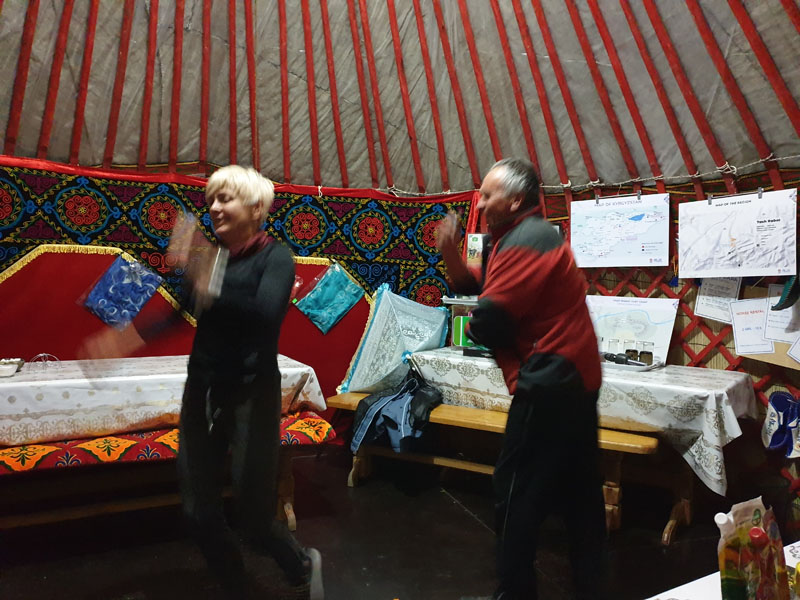
In Kyrgyzstan, an invitation to a yurt is not unusual
From the Park, along a difficult and demanding route through the 4000 m high Tosor Pass, we head towards the next place that should be on the bucket list of every traveler to Kyrgyzstan – Lake SongKol. It sits at an altitude of 3000 m above sea level, in the Karatal-Japyryk Nature Reserve, and the lake itself is accessible to tourists only in the summer. For 200 days a year, the lake and the road leading to it are completely covered with snow and out of reach for tourists. In summer it turns into a peaceful oasis. There are no hotels, hostels or restaurants around the lake. Only peace and amazingly beautiful nature are guaranteed on your visit.
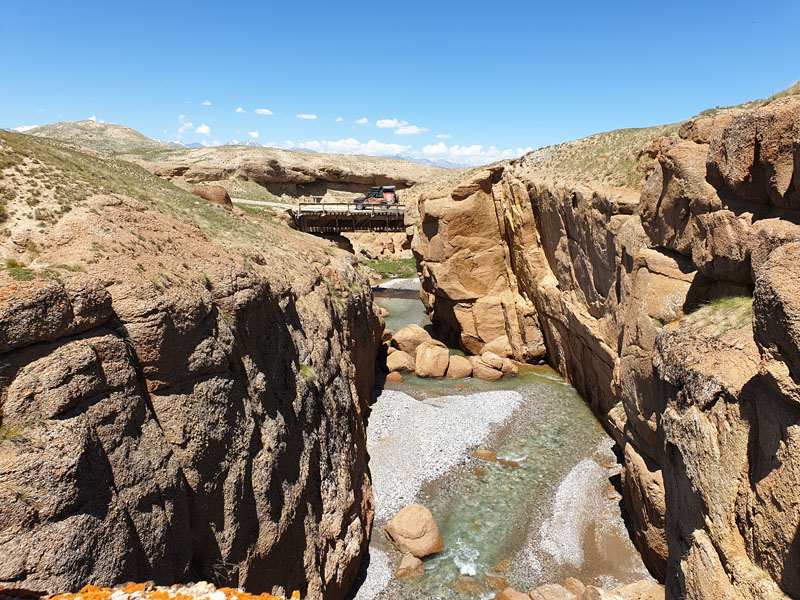
This bridge on the way to KolSuu was also very solid
The next point on our expedition route is the periodic KolSuu lake located near the Chinese border. Just getting there will provide you with a lot of adrenaline. The bends on the way to the lake are very challenging, and finally arriving at the lake is a very emotional experience.
We will end the trip in Bishkek, on the way there, passing through Tash Rabat – the 15th century caravanserai located at an altitude of 3200 m above sea level and the picturesque MELS Pass – named after the gentlemen – Marx, Engels, Lenin and Stalin.
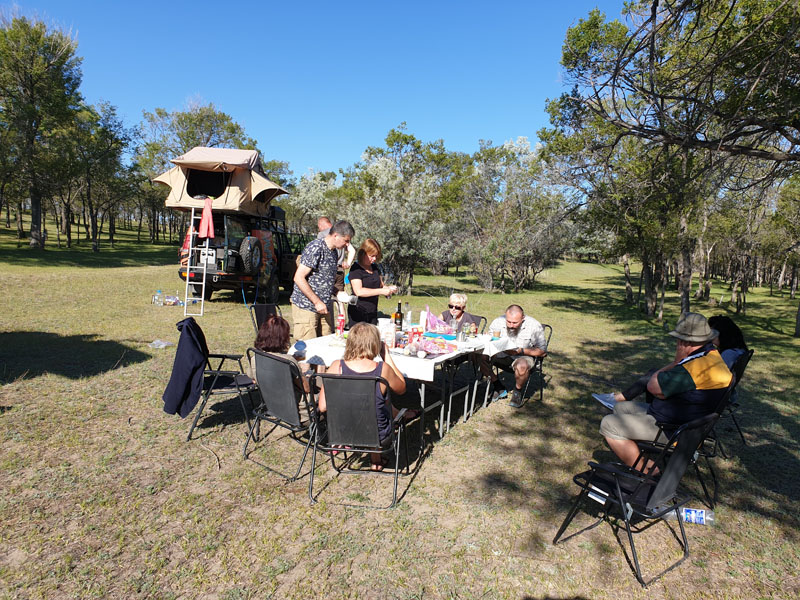
Wild camping – a litle piece of Kyrgyzstan all to ourselves
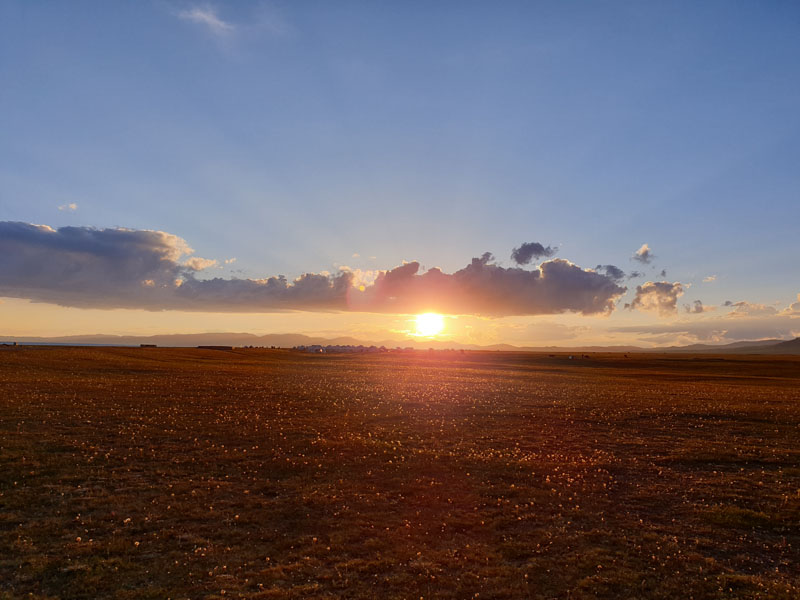
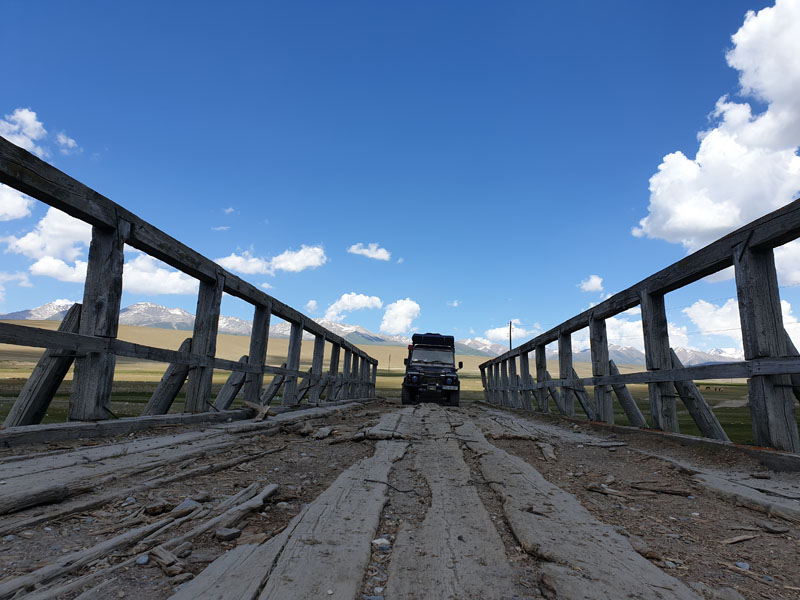
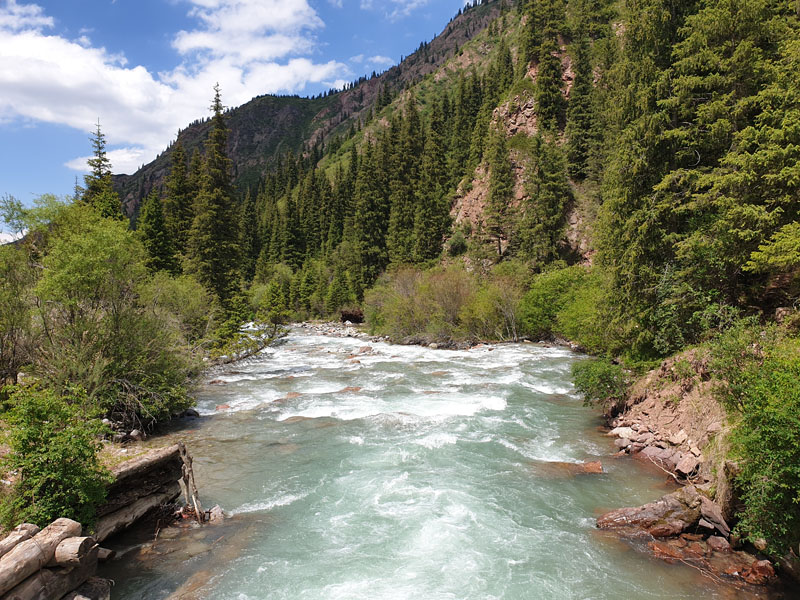
If we are lucky, we might catch a real Kyrgyz wedding in our final base in Bishkek!
Kyrgyzstan is open and it is one of the countries that I heartily recommend to anyone. Regardless of whether they like to ride a motorcycle, horse, bicycle or car. Remember: Kyrgyzstan is warm, dry and cheap. At least in summer and early fall.
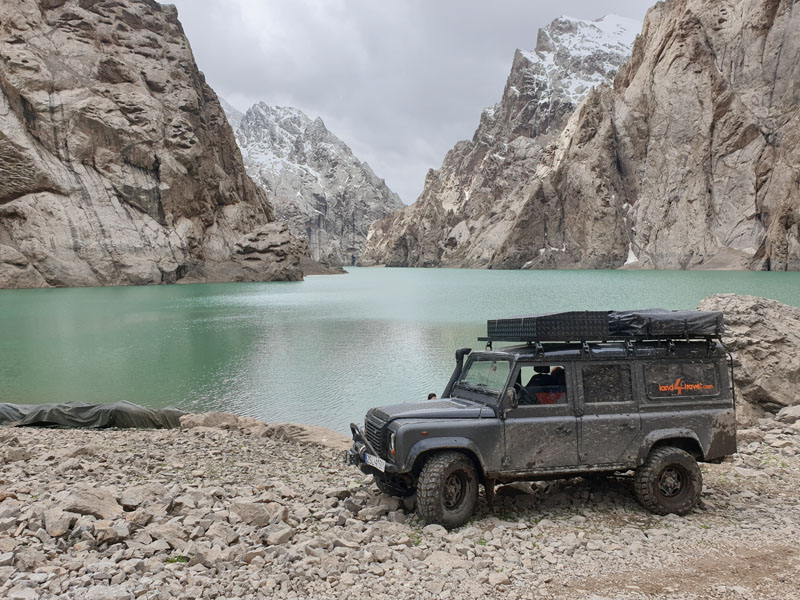
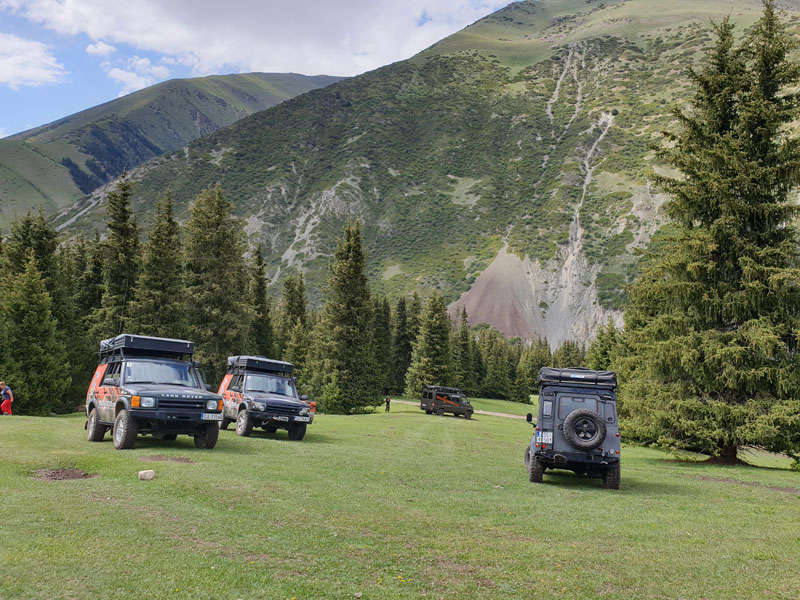
Kyrgyzstan is a fascinating country to visit , and each new trip brings new discoveries and new wonders. A 4WD is a necessity to properly explore the country and though sometimes driving there can be nerve-wracking, we can without hesitation recommend it as a destination to explore.
We are commencing our next trip to Kyrgyzstan on August 28.
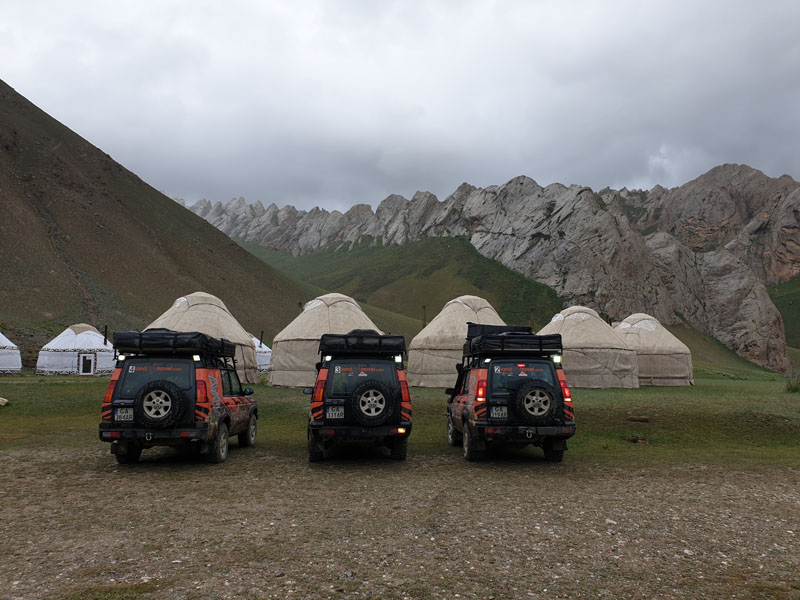
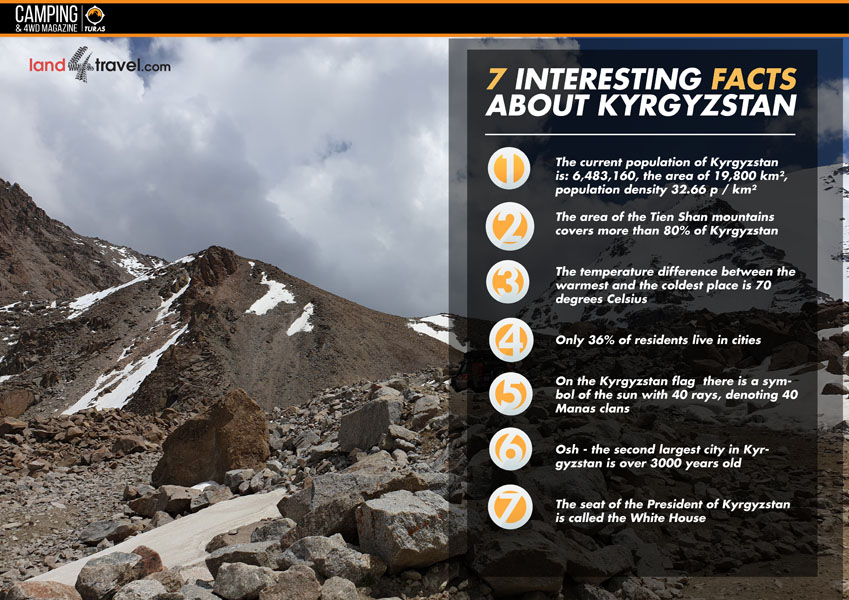


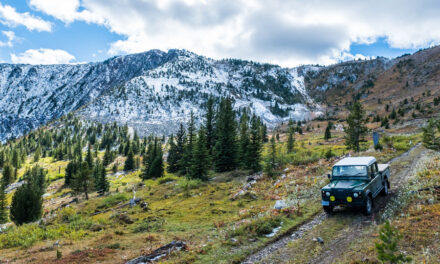
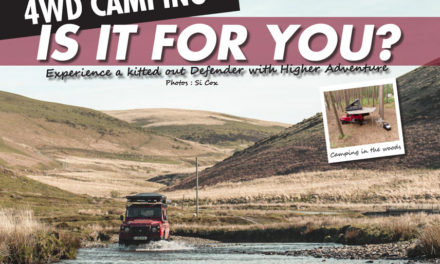
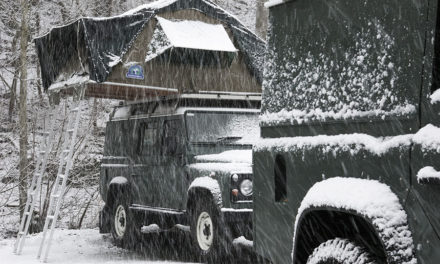
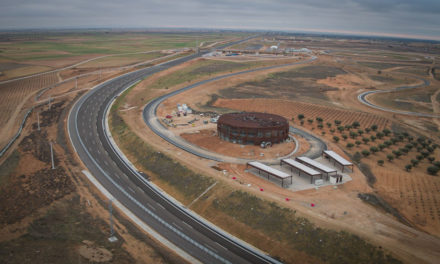
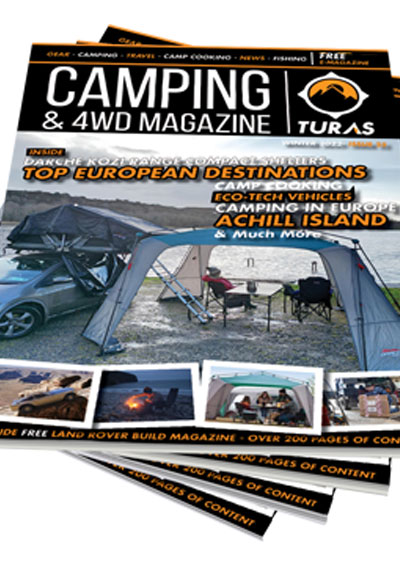

Recent Comments